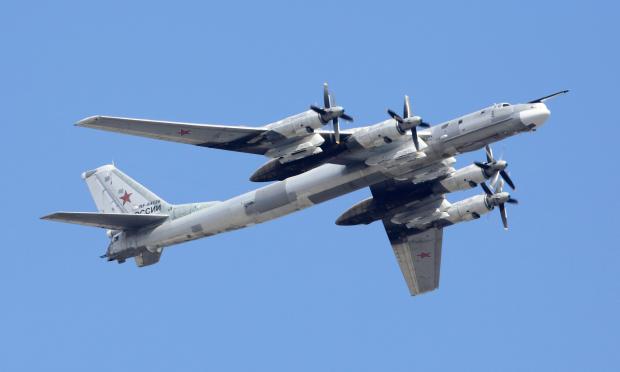The war in Ukraine continues unabated, with the Ukrainian Armed Forces in the final stages of preparations to launch a large-scale offensive to recapture their country's territory from Russian invaders.
However, yesterday, May 1, 2023, Russian cruise missiles dealt a painful blow to Ukrainian military infrastructure, which had the effect of significantly degrading Ukraine's ability to launch its counterattack, at least immediately.
The statement of the Russian Ministry of Defense on the attack in Pavlograd
According to a reputable International Media article, "Russian cruise missiles hit a facility in the Ukrainian city of Pavlograd in the Dnipropetrovsk region, causing a massive explosion, possibly the largest of all explosions so far in the conflict," which then points out
" The Russian Ministry of Defense stated in cryptic form on May 1, 2023 that, "The Armed Forces of the Russian Federation launched a long-range attack with high-precision air- and sea-based missiles against facilities of the Ukrainian military-industrial complex. The objective of the attack was achieved. All designated targets have been neutralized. Companies there that produce ammunition, weapons and military equipment for Ukrainian forces have ceased operations."
Multiple social media sources say the likely target in Pavlograd was a factory in the city used to produce rocket fuel and explosives.
The Ukrainian version of the attack
Completely ignoring the fact that a cruise missile could not cause such a large explosion on its own, and while the existing video strongly suggests secondary explosions, Dnipropetrovsk Region Military Command Serhiy Lysak said on his Telegram channel:
"An industrial plant was damaged in Pavlograd. A fire broke out there, which the rescuers have already extinguished. In the residential area, 19 high-rise buildings, 25 private houses, six schools and preschools and five shops were destroyed.
Given the subsonic terminal velocity of a cruise missile and its relatively small warhead, it is highly likely that one or more missiles struck missile fuel tanks or their engines that were mounted either in the open or under a light protective canopy.
Typically, explosives and incendiary materials are stored in deep underground facilities safe even from major aerial attacks. The fact that large quantities of rocket engines or fuel were lying in the open indicates that the incendiary charge was to be carried.
The Russian Aerospace Forces (RuAF) appear to have struck just when the vulnerability was greatest.
The Russian hoax scheme
Russia's meticulous planning is also evident because Russia went to great lengths to mislead and deceive Ukrainian air defenses (AD).
A large number of Russian bombers, some reports say nine Tu-95s and two Tu-160s were in the air. Amazingly, according to multiple sources, they only fired 18 cruise missiles!
According to the Supreme Commander of the Armed Forces of Ukraine Valerii Zaluzhnyi, Russia began firing missiles around 2:30 a.m., using strategic aircraft, nine Tu-95 aircraft and two Tu-160 aircraft.
In total, Ukrainian air defenses shot down 15 of the 18 Kh-101 and Kh-555 cruise missiles launched.
Kh-101 - destructive power and accuracy
The Kh-101 is a low-observation cruise missile with a reported operational range of 4,500 kilometers (2,800 mi).
According to the open sources, the Kh-101 has a combat weight of 2,400 kg, including the 400 kg warhead. The Kh-555, to which Zaluzhnyi refers, is an older, less accurate variant of the Kh-101.
The accuracy of the Kh-101 missile, combined with its 400 kg warhead, gives it a significant punch making it suitable for use against hard targets.
The Ukrainians claim that only three Kh-101 missiles "passed Ukrainian air defenses."
Ukraine's Energy Ministry says the missile strike significantly damaged grid infrastructure in the Kherson and Dnipropetrovsk regions, while reports of power outages in Kiev and Odesa suggest more than three missiles "passed"
A single Tu-95 can carry 14 Kh-101 missiles (six internal, eight external). A single Tu-160 can carry 12 Kh-101 missiles internally in its bomb bay.
Also according to the claim of the Russian Ministry of Defense, some missiles were launched from the surface of the sea, while there is a discrepancy between the number of missiles allegedly launched and those launched from aircraft.
It is possible that Russia took off some of its bombers simply to confuse Ukrainian air defenses. It is also possible that some of the bombers launched decoy missiles
More likely it was a combination of both.
Some of the Russian bombers appear to have fired Kh-55 missiles as decoys.
The decoys launched by the Russian Air Force not only distracted Ukrainian air defenses, but also forced Ukraine to waste scarce Soviet and expensive Western anti-aircraft missiles to shoot them down.
The change of tactics of the Russian Air Force
It has recently been pointed out that the Russian Air Force's cruise missile attacks are now focused on the battlefield rather than degrading Ukrainian infrastructure as in the past.
The goal is to degrade Ukraine's offensive capability when it is most vulnerable, while moving its forces to the battlefront.
The April 28, 2023 cruise missile attack hit Ukrainian troops and equipment moving on the battlefront.
The May 1, 2023 attack likely prohibited the delivery of missiles to the battlefront in preparation for the Ukrainian counterattack.
Both attacks were carried out with a smaller number of missiles compared to the numbers used for attacks on infrastructure.
The tactics used by the Russian air force have improved.
Using medium-altitude drones such as the Orion, and possibly the Tu-214R, a Russian reconnaissance aircraft equipped with state-of-the-art optical and electronic equipment and radar systems, it locates and engages high-value targets with sophisticated cruise missiles.
At the same time, it uses disinformation and deception to deceive Ukrainian air defenses.



